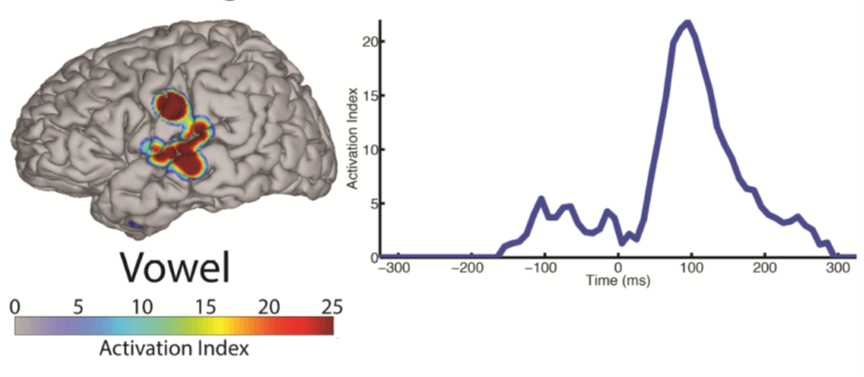Section: New Results
ECoG-based analysis of Speech processes
Participant : Fabien Lotte.
Acoustic speech output results from coordinated articulation of dozens of muscles, bones and cartilages of the vocal mechanism. While we commonly take the fluency and speed of our speech productions for granted, the neural mechanisms facilitating the requisite muscular control are not completely understood. Previous neuroimaging and electrophysiology studies of speech sensorimotor control has typically concentrated on speech sounds (i.e. phonemes, syllables and words) in isolation; sentence-length investigations have largely been used to inform coincident linguistic processing. In this study, we examined the neural representations of segmental features in the context of fluent, continuous speech production. We used recordings from the cortical surface (electrocorticography (ECoG)) to simultaneously evaluate the spatial topography and temporal dynamics of the neural correlates of speech articulation that may mediate the generation of hypothesized gestural or articulatory scores. We found some aspects of speech production (place of articulation) involved broad networks of brain regions during all phases of speech production: preparation, execution and monitoring. Other aspects (manner of articulation and voicing status) were dominated by auditory cortical responses after speech had been initiated. These results provide a new insight into the articulatory and auditory processes underlying speech production in terms of their motor requirements and acoustic correlates (see Figure 9 , [15] ).



